A Time to Live
Melody Hendrix
The Black Swallowtail butterfly is probably the second best known butterfly and one of the easiest to raise, next to the Monarch. It is found throughout much of North America. It is seen in Florida from February to October.
Their coloration and appearance change dramatically as they grow. Many spend the winter season as pupae, a middle stage of development, before finishing their transformation into butterflies in the spring.
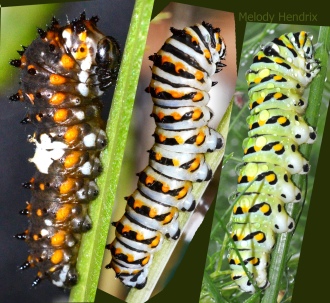
They molt, or shed their skin, five times.
All species of swallowtail caterpillars have a special orange “forked gland”, called the osmeterium, that secretes bad-smelling and bad-tasting chemicals to help keep predators away. The caterpillar absorbs toxins from the host plants. When in danger, the osmeterium everts and releases the foul smell to repel predators.
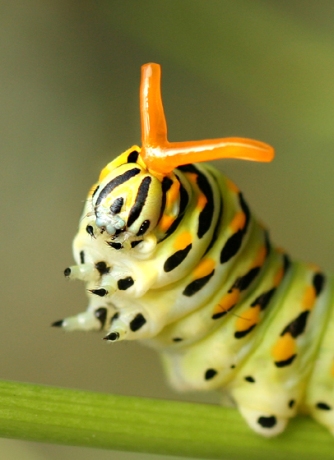
Black swallowtail caterpillars eat and lay their eggs on a variety of herbs in the carrot family as host plants. Many of them poisonous such as the Queen Annes Lace. It’s best not to have them at all. I have found dill, parsley and fennel (in that order) to be the safest and easiest plant to find and grow for host plants. If you plant enough, you may even have a little for yourself.
Black swallowtail caterpillars are eating machines, growing from .08 inches to 1.57 inches.
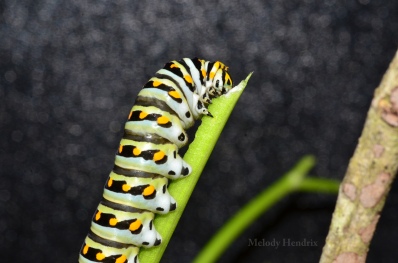
When a caterpillar is ready to pupate, it may crawl 100 feet or more away from its host plant. Once it has chosen a spot to pupate, it makes a large mat of silk from its spinnerets (under its head). In the midst of the mat of silk, it makes a small tight silk button
It crawls onto the mat and locks its anal prolegs on the silk button.
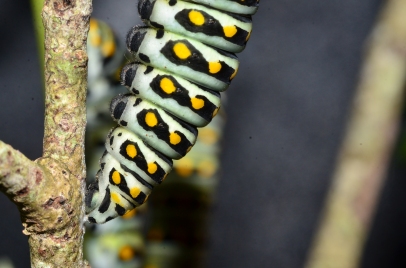
Then it makes a silk sling or girdle by touching its spinnerets down, moving its head up and over and down, up and over and down, dozens of times.
It ducks its head and upper body into the girdle and sits for a day.
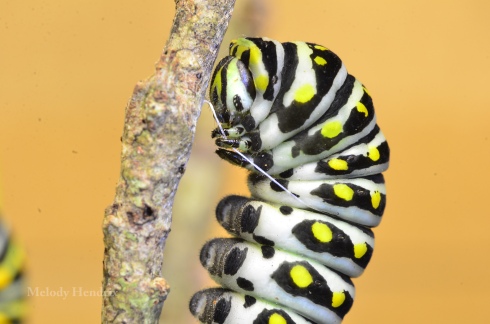
The following day, the caterpillar literally splits its cuticle (skin) behind its head and wriggles out. The cuticle slowly moves downward to it’s rear and falls off the new chrysalis. The fresh chrysalis attaches its cremaster (rear end of the chrysalis), covered in tiny hooks, into the silk button.
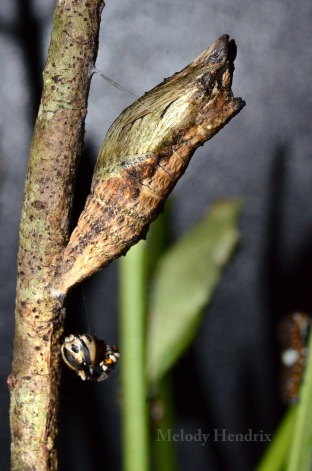
Over the next hour, the chrysalis slowly reshapes into the classic Black Swallowtail chrysalis shape. Over the next 24 hours, it hardens. It will color it’s chrysalis to match the plant. You can see two examples in this picture above.
The day before the butterfly emerges, its tiny wings show through the chrysalis shell.
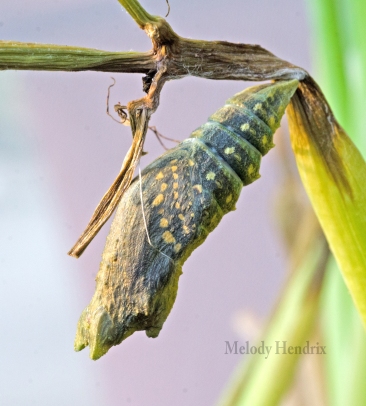
After emerging, it pumps hemolymph (blood) into its wings and the wings slowly expand into full size and shape.
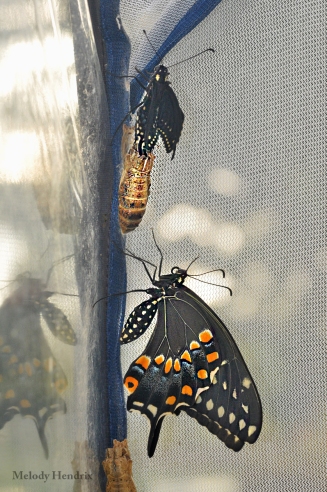
If the weather is bad, you can wait a day after it emerges to release it. It does not eat the day it emerges. For extreme weather, you can keep adult male and female butterflies in the butterfly house with nectar and host plants and they will mate and lay eggs.
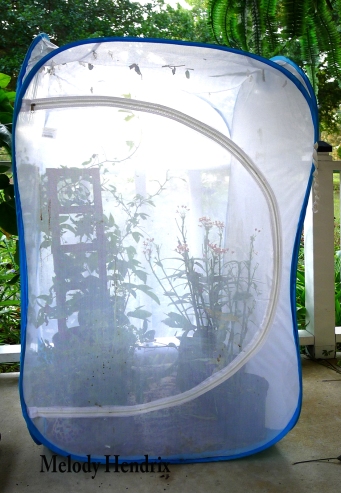
The black swallowtail is protandrous, meaning males emerge before females. This emergence pattern is advantageous, because males that emerge earlier have a greater success in competing for superior territories, indicated by female preference. The superior territory is more important than body size.
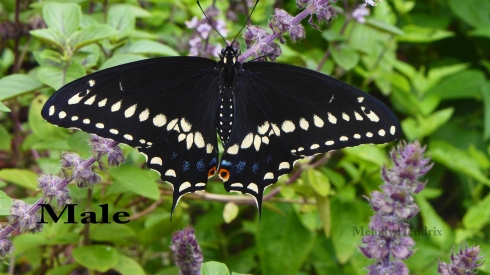
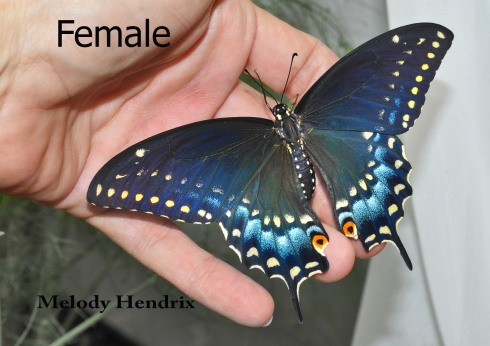
Males can only mate twice a day, but females will mate more than once to replace a sperm supply that has deteriorated with time.
Usually, Black Swallowtails live about 10 to 12 days. Some however, can live up to 35 to 40 day while overwintering.
If you want to see a closeup and detailed view of the Black Swallowtail’s entire life cycle, I think you will really enjoy this video.
Next week will be another one of my favorites (maybe they are all favorites) of the yellow sulphur butterflies. They have the sweetest face.
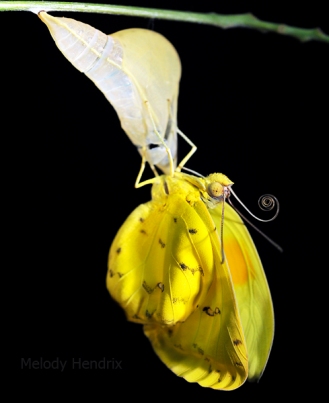




Melody, I will never look at caterpillars the same and I promise to try not to squish them.
LikeLike
Melody,
I am enjoying your butterfly series. Did you make the video used in today’s post? It was wonderful and very easy to follow. I’m looking forward to the next installment.
Bill Lites
Subject: [New post] Raising Eastern Black Swallowtail Butterflies
Onisha Ellis posted: “A Time to Live Melody Hendrix The Black Swallowtail butterfly is probably the second best known butterfly and one of the easiest to raise, next to the Monarch. It is found throughout much of North America. It is seen in Florida from “
LikeLike
I’m always amazed at your butterfly posts. This one was spectacular as are they all.
LikeLike